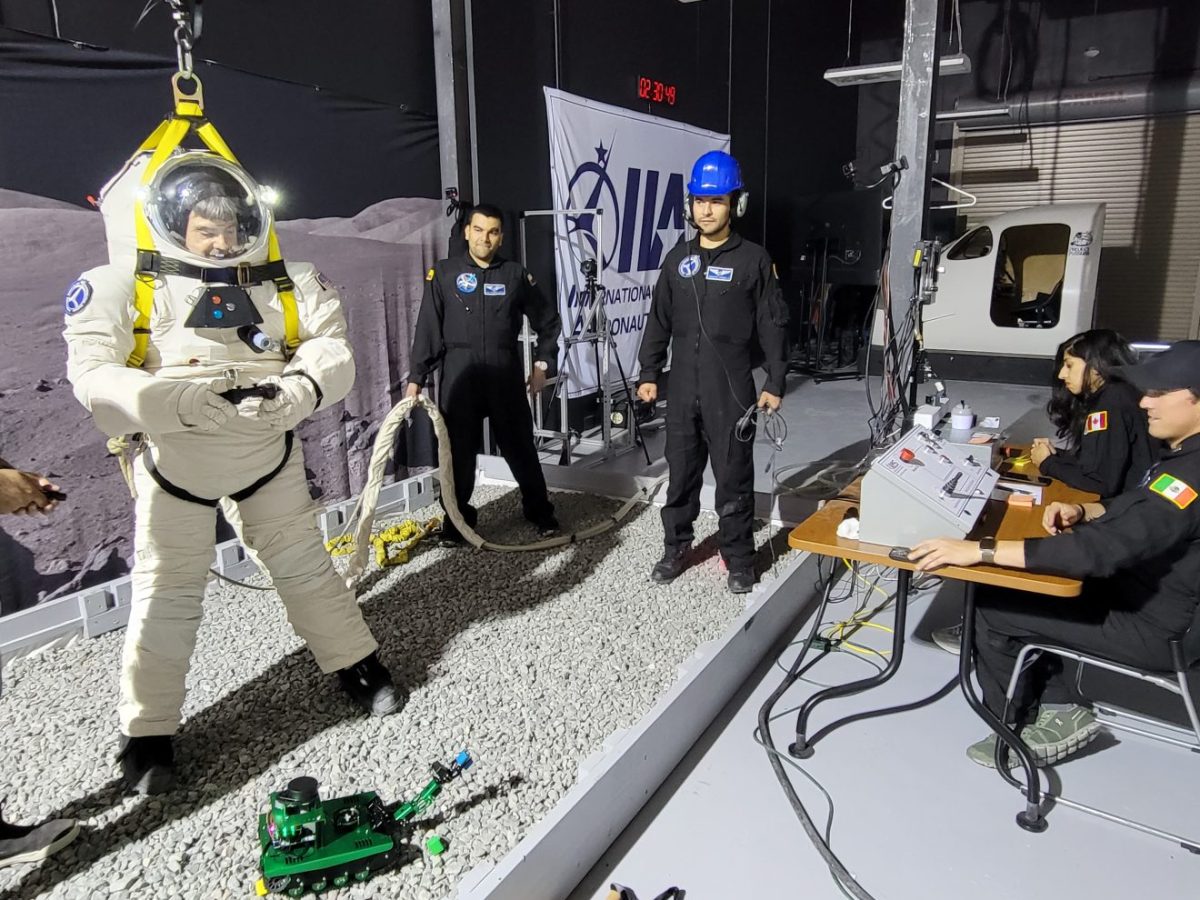
MELBOURNE, FLA. — A new lab that can mimic different levels of gravity from lunar to Martian to zero and that will serve as a powerful tool for testing and evaluating a variety of technologies is now open at Florida Tech’s Center for Aeronautics and Innovation.
The IIAS gravity offset lab uses electromechanical means to simulate reduced gravity levels along a translational path 24-feet long. A bed of simulated lunar regolith was in place for initial testing in mid-April.
The new facility is one of several powerful tools available to help evaluate space suits and other tech, said IIAS Executive Director Jason Reimuller.
“You still have altitude chamber testing, you still have microgravity testing, but a gravity-offset laboratory allows you to do a lot of other tests, and you can do these tests all day at relatively low cost,” he said. “And unlike testing in parabolic aircraft or underwater, your support personnel are right there in a 1G laboratory environment.”
The lab provides these differing gravity environments by utilizing sensors that take hundreds of readings per second of the forces at work with the test subject – forces the system’s motor can be constantly adjusting. The system is described as “gravity offset” because that refers to how the motor compensates for the subject’s weight. A separate electromechanical system permits translation of the test subject along the testbed.
Like NASA’s Active Response Gravity Offload System (ARGOS), the new lab was built to evaluate a variety of technologies in reduced gravity environments, including space suits in both lunar gravity and zero-G.
The preliminary tests on the new system featured a prototype space suit provided to IIAS by Final Frontier Design, a company acquired by Paragon Space Development Corporation in 2022 to further develop space suit technologies under the Axiom contract to NASA.
Aside from technical evaluations of the space suit, various evaluations of human performance were conducted, including comparative assessments of 3D-printed tools designed for operation in space or on the lunar surface. Additionally, the effectiveness of several methods of enhancing mobility on the lunar surface were tested.
The initial research team consisted of Shawna Pandya of Edmonton, Alberta; Heidi Hammerstein of Cordele, Ga.; Brien Posey of Rock Hill, S.C.; John Michael Espinosa of League City, Texas; Mac Malkawi of York, Pa.; Alejandro Garcia of Miami, Fla.; David Guajardo of Mexico City; Dara Dotz of San Francisco, Calif.; Guadalupe Gastellum of New York, N.Y.; and Ken Ernandes of Melbourne Beach.
For Reimuller and IIAS, the new facility is a welcome addition. In addition to its Florida Tech facility, the organization has a network of synergistic campuses, he said, including an egress lab and a neutral buoyancy lab in Groton, Conn., and a Canadian outpost in Ottawa where parabolic flights and microgravity sciences are the focus.
IIAS has several areas of study that utilize these operations, including astronomy, upper atmosphere science, bioastronautics and human factors and performance. “We have a long-term vision here at Florida Tech of creating opportunities and facilities that can help bring aviation, medicine and engineering together to enable cutting-edge research in space-related fields,” Reimuller said.
— END—


